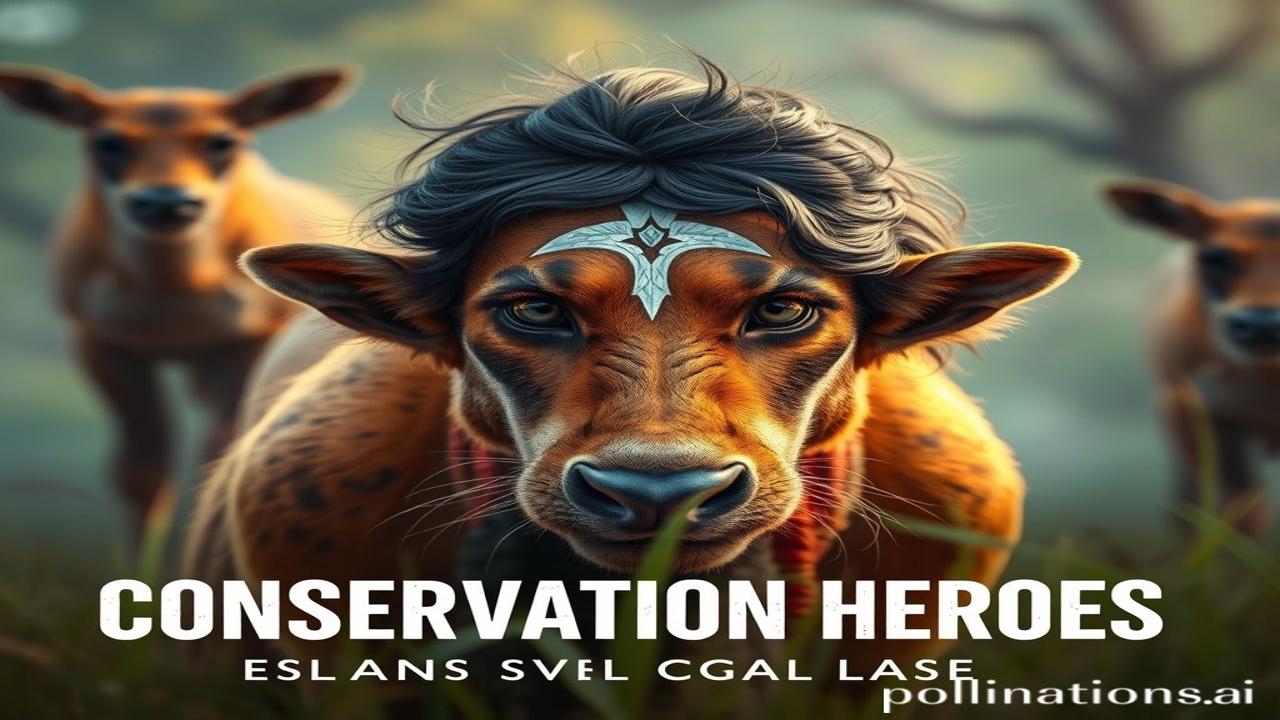Conservation Heroes: Indians Saving Local Wildlife – Unsung Stories of Prakriti Prem
Kabhi socha hai, ki jungle ke andar kya awaaz hoti hai jab koi sunne wala nahi hota? Sirf patton ki sarsarahat, nadiyon ka geet, aur kuch aisi kahaniyaan, jo waqt ki dhool mein chhup jaati hain. Today, we’re going to unearth some of those stories – the stories of Indian conservation heroes, the log who dedicate their lives to protecting our amazing local wildlife.
Historical & Cultural Context: Conservation – A Timeless Indian Value
Conservation isn’t a new concept for India. Actually, it’s deeply woven into our history and culture. Ancient texts like the Vedas and Upanishads emphasize the interconnectedness of all living beings and the importance of living in harmony with nature. Ashoka’s edicts (3rd century BCE) showcase early examples of wildlife protection laws. Even before that, many indigenous communities lived sustainably, understanding the delicate balance needed for their survival and the well-being of the forests and rivers they depended on. We can say it that our cultural believes that प्रकृति ही संस्कृति है.
But somewhere down the line, with rapid urbanization and industrialization, we started losing sight of this ancient wisdom. The 20th century saw rampant deforestation and poaching, pushing many species to the brink. But thankfully, there were – and are – those who stepped up to fight for what’s right.
ज़मीनी सच – लोग और जीवन / Deep Dive: Voices from the Ground
Imagine life in a small village nestled on the edge of a tiger reserve. “Arre beta, jungle hamari Maa hai,” says Ramlal Kaka, a local tribal elder. “If we don’t protect the tiger, who will protect us?” He knows that the forest provides everything they need – clean water, medicinal plants, and even their livelihood.
Then there’s Priya, a young biologist working tirelessly to protect Olive Ridley sea turtles on the coast of Odisha. She spends countless nights on the beach, helping hatchlings make their perilous journey to the sea. “It’s heartbreaking to see so many turtles die,” she says, her voice heavy with emotion. “But every turtle that survives is a victory.”
And let’s not forget Dr. Sharma, a veterinarian dedicating his life to rescuing and rehabilitating injured elephants in Assam. He’s seen the devastating impact of human-elephant conflict firsthand. “These magnificent animals are losing their habitat,” he explains, “and we need to find a way for humans and elephants to coexist peacefully.”
धरोहर और पहचान / Cultural Significance Today: Rediscovering Prakriti Prem
Today, the spirit of these conservation heroes is alive and well. We see it in the growing awareness about sustainable living, in the rise of eco-tourism, and in the efforts of communities to protect their local ecosystems. The Chipko movement, which started in the 1970s, where women hugged trees to prevent them from being felled, remains an iconic example of community-led conservation in India.
The fight to save our wildlife is not just about protecting individual species; it’s about preserving our cultural heritage, ensuring the health of our planet, and building a more sustainable future for all. It’s about rediscovering the Prakriti Prem (love for nature) that’s deeply ingrained in our Bharatiyata (Indianness).
मजेदार तथ्य या भ्रम-भंजक / Fun Fact: The Bishnoi Community and their Animal Love
Log samajhte hain ki conservation sirf sarkar ka kaam hai. Lekin asli sach yeh hai ki India mein, kai communities hain jo apni taraf se wildlife ko bachane ke liye bohat kuch kar rahe hain. One extraordinary example is the Bishnoi community of Rajasthan. They are known for their unwavering dedication to protecting animals, especially the blackbuck. Their reverence for nature is so strong that they have been known to risk their lives to protect these animals from poachers. In fact, one famous incident saw Bishnoi villagers sacrificing their lives to protect blackbucks from hunters back in 1730! This act of selfless sacrifice highlights the deep connection that some communities have with the natural world.
दृश्य और भावनाएं / Visual & Sensory Layer: Experiencing the Wild
Imagine the smell of damp earth after the first monsoon rain in a tiger reserve. The air is thick with the scent of blooming jasmine and the earthy aroma of the forest floor. The sound of crickets chirping fills the night, punctuated by the distant roar of a tiger. The temple walls, covered in moss and lichen, feel cool and smooth to the touch. These sensory experiences remind us of the beauty and wonder of the natural world – and the importance of protecting it.
अंतिम विचार या उद्धरण / Closing Insight: Echoes of the Ancient Wisdom
Conservation isn’t just a modern trend; it’s a timeless principle rooted in our cultural heritage. As the Rig Veda says:
“माता भूमिः पुत्रोऽहं पृथिव्याः”
(Mātā bhūmiḥ putro’haṁ pṛthivyāḥ)
“The Earth is my mother, and I am her child.”
Let’s remember this ancient wisdom and work together to protect our local wildlife, for ourselves and for generations to come. Let’s become the next generation of Conservation Heroes, writing new chapters in the ongoing story of India’s Prakriti Prem.
